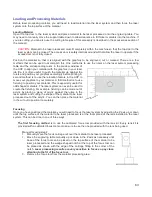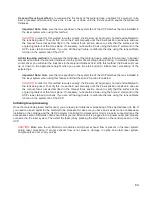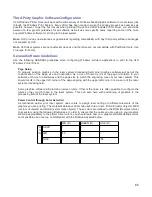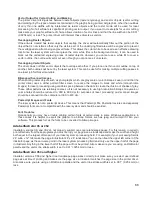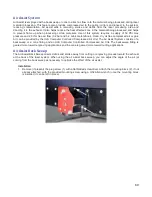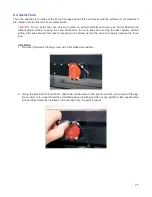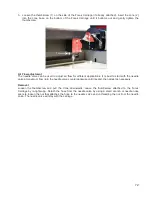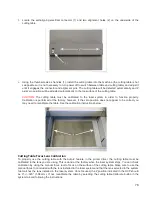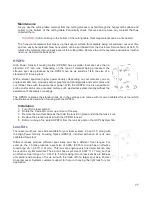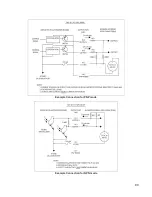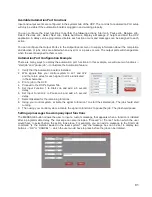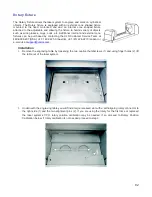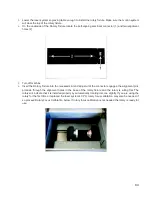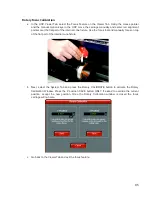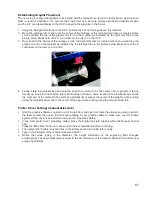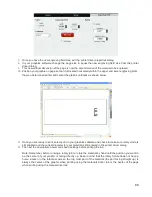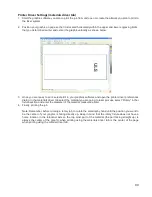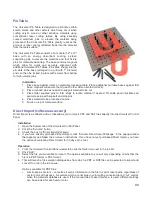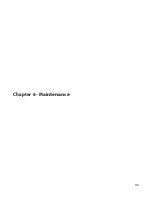
Maintenance
As you use the cutting table, material from the cutting process may fall through the honeycomb surface and
collect in the bottom of the cutting table. Periodically check this area and remove any material that has
collected there.
CAUTION:
If left to build up in the bottom of the cutting table, this scrap material can be a fire hazard.
The honeycomb material that makes up the support surface for materials being cut will wear out over time
and can easily be replaced. New honeycomb can be purchased from the Customer Service Team at ULS. To
replace the material, remove back panel of the cutting table. Remove the old honeycomb and replace it with a
new one. Reinstall the back panel.
HPDFO
High Power Density Focusing Optics (HPDFO) has a smaller focal spot size than a
standard 2.0” inch lens. Depending on the type of material being processed, the
effective spot size produced by the HPDFO can be as small as 1/4th the size of a
standard 2.0” focusing lens.
With a smaller spot size (higher power density), depending on your material, you can
engrave smaller text, produce sharper graphics and photographs and vector mark and
cut thinner lines with the same laser power. With the HPDFO it is also possible to
scribe and/or etch some uncoated metals, such as stainless steel, directly without the
assistance of chemicals or coatings.
The HPDFO replaces the standard lens kit in the carriage and comes with its own calibrated focus tool which
should always be used when focusing with the HPDFO.
Installation
1. Turn off the laser system.
2. Rotate the X axis arm cover up and out of the way.
3. Remove the two thumbscrews that hold the lens kit in place and slide the lens kit out.
4. Replace the standard lens kit with the HPDFO lens kit.
5. Before running a file, select HPDFO from the lens size list on the UCP’s System Tab.
Lens Kits
There are two Focus Lens Kits available for your laser system; 2.0 and 1.5, along with
the High Power Density Focusing Optics (HPDFO). Included with each kit is its own
calibrated focus tool.
Different lenses produce different spot sizes and have different focal ranges. For
example, the 1.5 lens produces a spot size of 0.003” (0.076 mm) and has an effective
focal range of +/- 0.075” (1.91 mm). This lens can engrave very fine detail, but can only
be used on very flat materials. The 2.0 lens has a spot size of 0.007” (1.77 mm), but has
an effective focal range of +/- 0.140” (3.5 mm) making it much less sensitive to flatness
of material and accuracy of focus, but with the trade off of a larger spot size. Contact
Universal Laser Systems customer support for help in choosing the right lens for your
application.
77
Summary of Contents for VLS2.30
Page 1: ...VLS Desktop User Guide VLS2 30 VLS3 50 www ulsinc com Revision 2012 08...
Page 5: ...Chapter 1 Specifications 5...
Page 8: ...Chapter 2 Safety 8...
Page 9: ......
Page 15: ......
Page 16: ......
Page 19: ...Chapter 3 Installation 19...
Page 36: ...Chapter 4 Operation 36...
Page 62: ......
Page 68: ...Chapter 5 Accessories 68...
Page 80: ...Example Connection for PNP mode Example Connection for NPN mode 80...
Page 92: ...Chapter 6 Maintenance 92...
Page 99: ...www ulsinc com...

